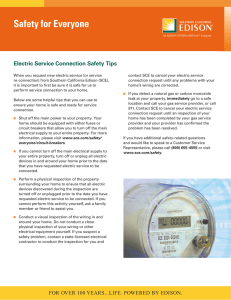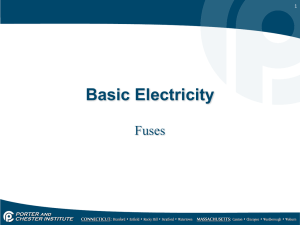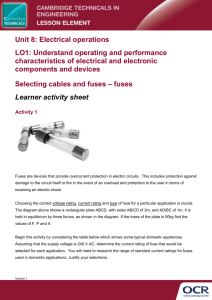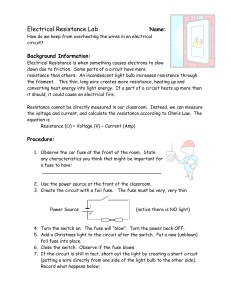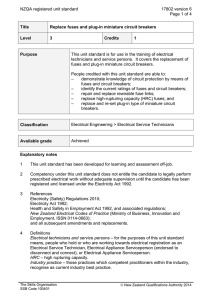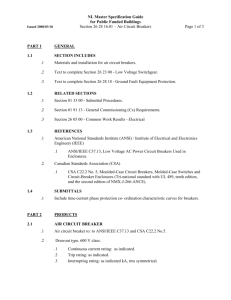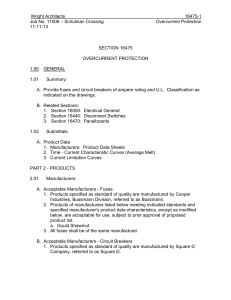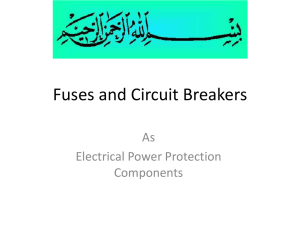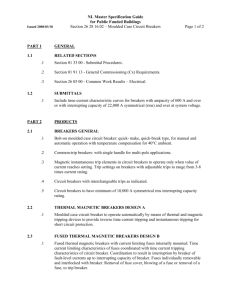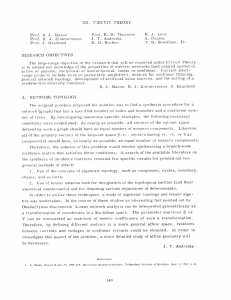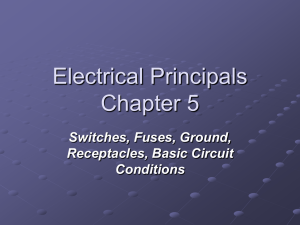Fuses vs Circuit Breakers for Low Voltage Applications
advertisement
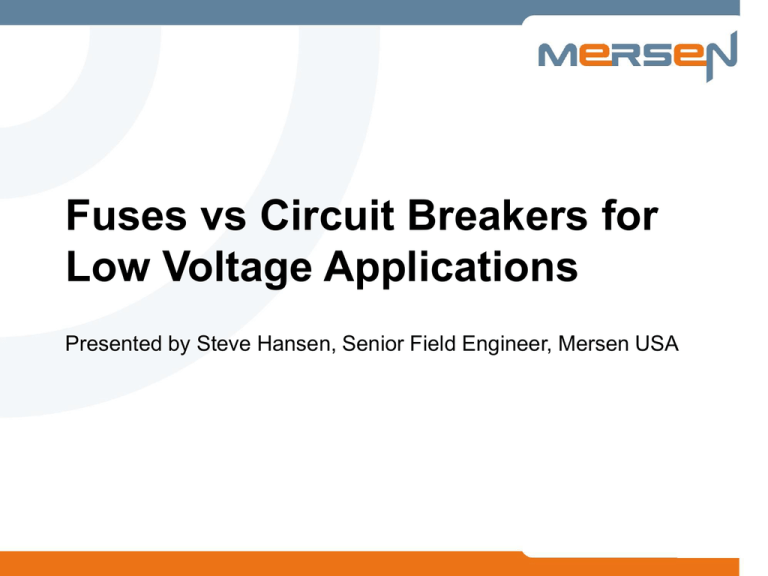
Fuses vs Circuit Breakers for Low Voltage Applications Presented by Steve Hansen, Senior Field Engineer, Mersen USA White Paper Outline Definitions Interrupting Ratings Component and System Protection – Motor Circuit Protection – Short Circuit Ratings – Type 1 vs Type 2 Protection – Power Electronics Applications Arc Flash Mitigation Selective Coordination Maintenance Requirements 2 White Paper Outline - Continued Resetting or Replacing Overcurrent Protective Devices Diagnostics Reliability Obsolescence Cost of Ownership Summary References 3 Interrupting Ratings Fuse – 200kA or Higher (Class J, R, L, CC, T) – Full Voltage Rating Circuit Breaker – 7.5, 10, 14, 18, 20, 22, 25, 30, 35, 42, 50, 65, 85, 100, 125, 150, or 200kA – Full or Slash Voltage Rating – Series Rated 4 Component & System Protection Fuses – Component Protection Often Possible – Type 2 Protection of Motor Starters & Contactors – Components Type Tested to 100kA With Class J & CC – Higher SCCR For Industrial Control Panels – Test Limiters Reduce Testing Costs – I2t Protection for Power Electronics Circuit Breakers – Protects Conductors – No Specific Let-thru Limits for CL Breakers – Type Testing is Limited 5 Arc Flash Mitigation Circuit Breakers – HRC 0 or 1 Possible – Higher Incident Energy at Higher Fault Levels – Advantage vs Fuses above 1200Amp Fuses – HRC 0 Likely Above Threshold Current – up to 800A Fuse – High Energy Possible – Larger Ratings & Low Fault Current 6 Selective Coordination Fuses – Follow Mfgs Ratio Tables – Selective Under Overload and Short Circuit Circuit Breakers – Selectivity Difficult With Instantaneous Tripping (below 0.1 sec) – Zone Selective Interlocking May Give Selectivity Below 0.1 sec 7 Maintenance Requirements Circuit Breakers – Inspection and Preventive Maintenance – Electrical Performance and Verification Testing (Field Testing) • Insulation Resistance Test • Individual Pole Resistance Test • Inverse-time Overcurrent Trip Test • Instantaneous Overcurrent Trip Test • Rated Current Hold-in Test Fuses – Inspection and Preventive Maintenance – Electrical Performance Testing Not Required 8 Resetting or Replacing Circuit Breakers – Reset on an Overload - OK – Inspect and Test B4 Reset on a Short Circuit Fuses – Replace All Three – All Should Have Same Catalog Number 9 Diagnostics Fuse – Open Fuse Indicators Available – Dissect Blown Fuse To Determine Current Level Circuit Breaker – Visual Indication of Status (open, closed, tripped) – Diagnostics & Communication With Electronic Trip Units 10 Reliability Circuit Breaker – Affected By Environmental Factors and Previous Interruptions – May Operate Faster or Slower than Expected – Lack of Maintenance Reduces Reliability – Beware of Refurbished Equipment Fuse – Less Affected by Environmental Factors – Tired Fuse May Open Prematurely – Will Not Operate Slower With Age – Replace All Three Fuses For Maximum Reliability 11 Obsolescence Circuit Breaker – Increase in Fault Current may Over-duty CB – Equipment SCCR Tied to a Specific CB Cat Number Fuse – 200kA IR Unlikely to Become Obsolete – Equipment SCCR Tied to Fuse Class Not Specific Mfg 12 Cost of Ownership – Real or Perceived? Initial Cost – Lowest for Low IR CBs – Highest for High IR CBs Maintenance Cost – Lower for Fuses – Higher for CBs Obsolescence Cost – More Likely to be High with CBs 13 Summary Attribute Fuse CB Interrupting Rating √ Component & System Protection √ Arc Flash Mitigation √ Selective Coordination √ Maintenance Requirements √ Resetting or Replacing √ √ Diagnostics √ √ Reliability √ Obsolescence √ Cost of Ownership √ 14 √ √ 15
